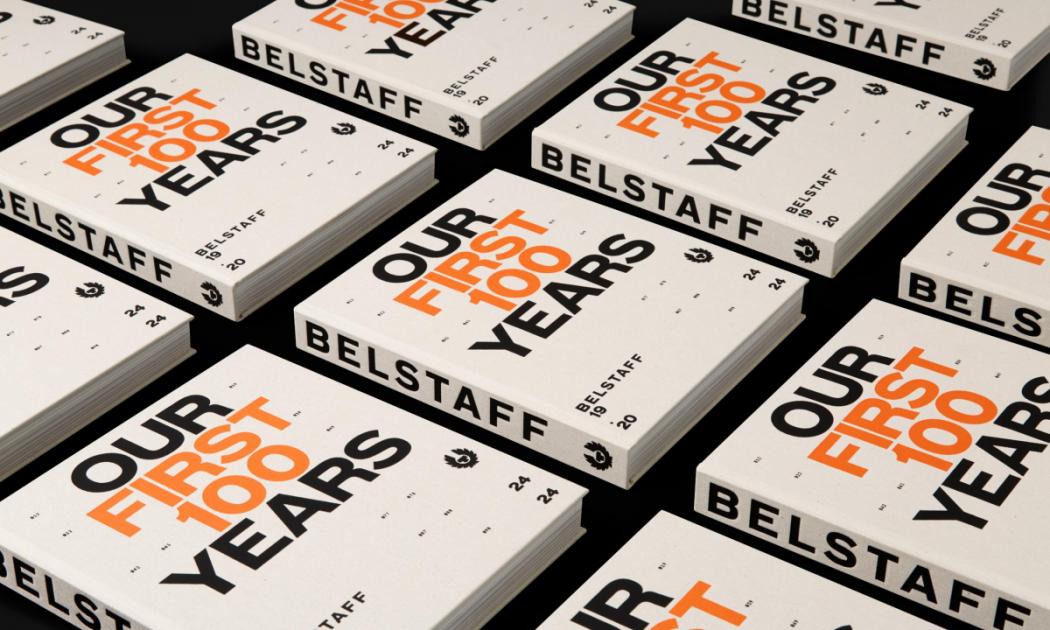Revitalising a heritage brand requires a delicate balance of freshness and consistency. Today, during a walk down Regent Street, I spotted an example of a brand that seems to be successfully pulling off this balancing act. The shop window of motorcycle jacket brand Belstaff (below) celebrated “Our First 100 years (1924-2024)”. The display neatly captured the idea of a brand with roots in the past but an eye on the future. In this post, we explore some of the ways Belstaff has successfully navigated the road to recovery.

1. Long term leadership
The catalyst for the Belstaff brand revitalisation was chemicals billionaire Jim Ratcliffe buying the company in 2017. That year, the business lost £62million and was on the brink of bancruptacy (1). Most recent annual revenue of €67 was up 85% versus 2017, with the business on the verge of profitability.
Importantly, Ratcliffe’s purchase was driven by a passion for the brand’s “get-it-done Britishness and purpose-led design”, according to a recent Times article I read (2). This meant he was committed to a long term turnaround. “It’s taken a lot of work but we are on track,” Ratcliffe told the Times. “I expect over the next year or two that we will see it finally fulfilling its undoubted potential.”
2. Refresh what made you famous
Looking back at the history of the Belstaff brand highlighted key attributes that made it famous in the first place. The business was founded by Eli Belovitch in 1924 with the ambition to create waterproof jackets for motorcyclists, finally selecting Egyptian waxed cotton as the solution. The brand became synonymous with quality craftsmanship, durability and a sense of adventure, as the brand’s website explains. “Over the decades, we’ve designed protective suits for racing drivers to give them the confidence to go faster. We’ve developed windproof smocks for Marines to help them weather the storm. We’ve created insulating clothing for mountaineers so they can venture farther.” (3) These values are as relevant as ever today, creating a strong base on which to revitalise the brand.
3. Immersive insight
CEO Fran Millar was hired by Ratcliffe in 2020, having previously been CEO of his Ineos Grenadiers cycle team. She started her role by meeting some of the brand’s best customers face to face. This immersive customer connection revealed rich insight that brought to life the brand magic she needed to bottle. Belstaff’s durability and a strong personal connection with the products shone through. “One man has been wearing the same jacket for 45 years and told me how he gave one to his daughter to mark her going to university,” Millar told The Times (3).
4. Build on a strong core
The Belstaff brand revitalisation was built on the solid foundation of an iconic core product. The waxed cotton Trialmaster motorcycle jacket embodies Belstaff’s spirit of exploration and freedom. The core product plays a starring role in the brand’s centenary celebrations, as shown by the in-store display I saw below.
With a strong core at the heart, Belstaff has refreshed and expanded its product range. The brand now offers outerwear like t-shirts and more contemporary jackets, but always respecting the values of durabilty and quality. “CEO Millar’s ambition is that Belstaff should offer more things to more people while remaining true to the spirit of the phoenix on the sleeve of every jacket,” as the Time article explains (2).

5. Harness the power of influencers
Belstaff was tapping into the power of influencer marketing decades before the term was invented. Back in 1930, aviation pioneer Amy Johnson wore a Belstaff jacket when becoming the first woman to fly solo from England to Australia.
Later, in the 1960s, Hollywood movie star Steve McQueen bought a Belstaff Trialmaster. Importantly, this was a personal purchase, not a paid-for endorsement deal. The star’s endorsement was 100% authentic, the key to effective influencer marketing. “It instantly became one of his most prized possessions,” according to an Accent Clothing article (4). “McQueen wore the jacket regularly, including in endurance races, and soon became synonymous with the brand.” McQueen’s passion for Belstaff also played a role in securing modern day endorsement from David Beckham, who was “drawn to the brand as he idolised McQueen”.
In conclusion, the Belstaff brand story show how revitalisation requires strong leaders who use deep insight to reveal both what made the brand famous and what is needed to refresh it for today.
Sources
